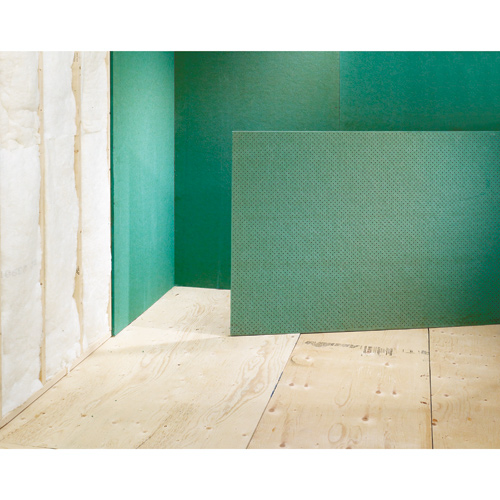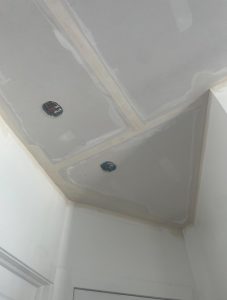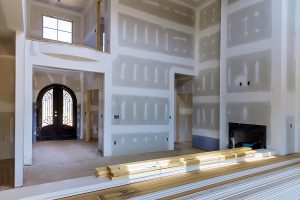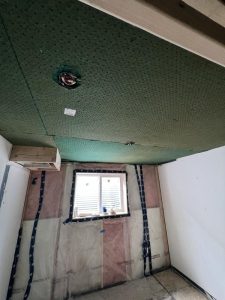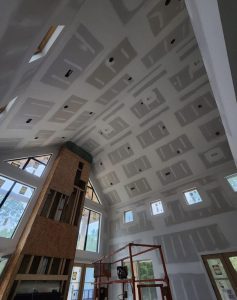In our increasingly noisy world, finding a quiet space to relax, work, or sleep can be challenging. Whether it’s the sound of traffic outside your window, noisy neighbors, or the constant hum of household appliances, unwanted noise can significantly impact our quality of life. This is where soundproofing comes in. By understanding and applying soundproofing principles, you can create a more peaceful and productive environment. In this blog post, we’ll delve into the basics of soundproofing, how it works, and why it’s essential for your well-being.
Understanding Soundproofing: The Basics
What is Soundproofing?
Soundproofing is the process of reducing or eliminating the transmission of sound between spaces. It involves various techniques and materials designed to block, absorb, or dampen sound waves. The goal is to minimize the impact of external noise and prevent sound from escaping or entering a particular area.
Types of Noise
To effectively soundproof a space, it’s important to understand the different types of noise:
- Airborne Noise: This includes sounds that travel through the air, such as voices, music, and television noise.
- Impact Noise: This refers to sounds resulting from physical impacts or vibrations, such as footsteps, furniture movement, and doors slamming.
Understanding the nature of the noise you’re dealing with will help you choose the right soundproofing methods.
How Sound Travels
Sound travels in waves and can move through different mediums: air, liquids, and solids. In the context of buildings, sound mainly travels through air (airborne sound) and building structures (structure-borne sound).
Airborne Sound
Airborne sound waves travel through the air and can enter buildings through windows, doors, and walls. Once inside, these waves can bounce off surfaces, causing echoes and further noise transmission.
Structure-Borne Sound
Structure-borne sound occurs when sound waves travel through solid materials such as walls, floors, and ceilings. This type of noise is often more challenging to manage because it involves vibrations that can travel long distances through a building’s structure.
Principles of Soundproofing
Effective soundproofing relies on several key principles: absorption, damping, decoupling, mass addition, and sealing. Each principle addresses sound transmission in a different way, and combining them can provide the best results.
Absorption
Absorption involves using materials that soak up sound waves, reducing the amount of sound that reflects back into the room. Common sound-absorbing materials include:
- Acoustic Panels: Made from foam or fabric-wrapped fiberglass, these panels can be mounted on walls or ceilings to absorb sound.
- Carpets and Rugs: Soft floor coverings can absorb sound and reduce echoes.
- Curtains and Drapes: Thick, heavy curtains can help absorb sound, especially when they cover large windows.
By using these materials, you can significantly reduce the amount of sound that bounces around a room.
Damping
Damping is the process of reducing sound energy by converting it into a small amount of heat. This is achieved through the use of damping compounds, which are applied between layers of drywall or other building materials. The most common product for damping is:
- Green Glue: A viscoelastic compound that can be applied between two layers of drywall to reduce sound transmission. It works by dissipating the sound energy as it travels through the walls.
Damping is particularly effective for reducing low-frequency sounds, such as bass from music.
Decoupling
Decoupling involves separating two sides of a structure to prevent sound vibrations from traveling through. This method is particularly useful for walls, ceilings, and floors. Techniques for decoupling include:
- Resilient Channels: Metal channels that can be attached to wall studs or ceiling joists. Drywall is then attached to these channels, creating a gap that reduces sound transmission.
- Sound Clips: Special clips that attach to wall studs or ceiling joists and hold resilient channels, further reducing sound transfer.
- Staggered Stud Walls: A wall construction method where studs are staggered so that they don’t touch both sides of the wall, reducing the direct path for sound vibrations.
Decoupling is an effective way to reduce both airborne and impact noise.
Mass Addition
Adding mass to walls, floors, and ceilings can help block sound transmission by making it harder for sound waves to pass through. Materials that add mass include:
- Extra Layers of Drywall: Adding an additional layer of drywall to existing walls increases their mass and improves soundproofing.
- Mass-Loaded Vinyl (MLV): A dense, flexible material that can be installed on walls, floors, or ceilings to block sound.
- Concrete: Heavy and dense, concrete is an excellent sound barrier.
Increasing the mass of your building materials can effectively reduce the transmission of sound.
Sealing
Sealing involves closing gaps and cracks where sound can leak through. Even small openings can significantly reduce the effectiveness of other soundproofing measures. Methods for sealing include:
- Acoustic Sealant: A flexible, non-hardening sealant that can be used to fill gaps around windows, doors, and wall penetrations.
- Weatherstripping: Applied to doors and windows to seal gaps and prevent sound leaks.
- Door Sweeps: Attached to the bottom of doors to close the gap between the door and the floor.
Properly sealing all potential sound paths is crucial for effective soundproofing.
Why Soundproofing Matters
Health Benefits
Soundproofing your environment can have significant health benefits:
- Stress Reduction: Constant exposure to noise can lead to increased stress levels, affecting your mental health. A quieter environment can help reduce stress and create a more calming atmosphere.
- Better Sleep: Noise can disrupt sleep patterns, leading to poor sleep quality and overall health issues. Soundproofing your bedroom can help ensure a restful night’s sleep, which is essential for good health.
Productivity and Concentration
A quiet environment is crucial for productivity and concentration:
- Work Environment: In home offices or workspaces, reducing noise distractions can enhance focus and productivity. This is especially important for remote workers or professionals who need a quiet space to work.
- Learning Spaces: Students and professionals studying for exams or working on projects can benefit from a soundproofed environment that minimizes distractions and allows for better concentration.
Privacy and Comfort
Soundproofing enhances privacy and comfort within your home:
- Home Privacy: Soundproofing can prevent conversations from being overheard, ensuring that your private discussions remain confidential.
- Comfort: A quieter home environment is more comfortable and enjoyable, allowing you to relax without being disturbed by external noise.
Property Value
Investing in soundproofing can also increase the value of your property:
- Market Appeal: Soundproofed properties are often more appealing to buyers and renters, as they offer a quieter and more comfortable living environment.
- Long-Term Investment: Effective soundproofing can protect your property from noise pollution and increase its longevity and overall value.
Real-Life Applications
Residential Spaces
Soundproofing can significantly improve the quality of life in residential spaces:
- Bedrooms: Ensuring a quiet environment for restful sleep.
- Home Theaters: Enhancing the entertainment experience by reducing external noise and preventing sound from escaping the room.
- Shared Walls: Reducing noise between apartments or townhouses to maintain privacy and comfort.
Commercial Spaces
In commercial spaces, soundproofing is essential for creating productive and pleasant environments:
- Offices: Reducing noise distractions to enhance productivity and focus.
- Restaurants and Cafes: Creating a pleasant dining experience by minimizing noise from the kitchen, street, or other patrons.
- Studios: Ensuring high-quality sound recording in music and broadcast studios by preventing external noise interference.
Conclusion
In conclusion, soundproofing is a crucial aspect of creating a peaceful, productive, and comfortable environment. By understanding how sound travels and applying principles like absorption, damping, decoupling, mass addition, and sealing, you can effectively reduce noise transmission in your home or workplace. Whether you’re looking to improve your health, boost productivity, enhance privacy, or increase your property value, investing in soundproofing is a smart choice. Consider implementing these soundproofing techniques and products to transform your space into a quieter and more enjoyable place to live and work.
If you’ve had success with soundproofing projects or have questions about how to get started, feel free to share your experiences and ask questions in the comments section below. Let’s create a quieter world together!

